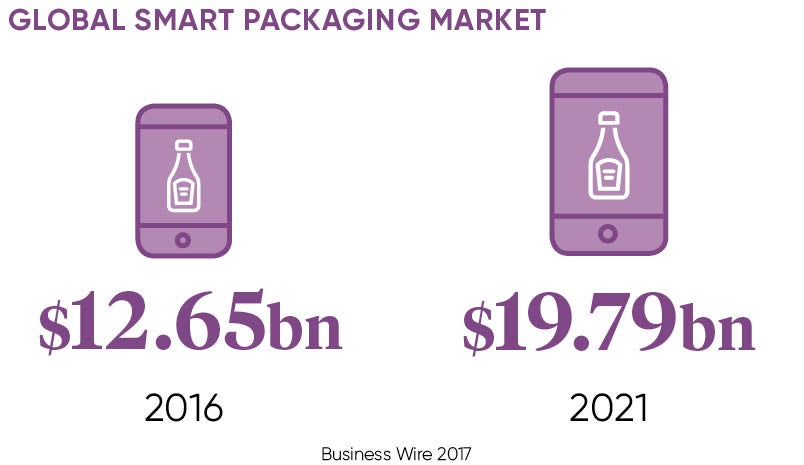Just point your smartphone at products on a supermarket shelf and a wealth of related information, tips and entertaining content appears on your mobile screen.
This is the connected packaging revolution, where bottles, labels, containers, packs and tins become portals into a digital realm.
Internet-connected packaging
Many of the world’s biggest consumer goods manufacturers believe the way we interact with brands will be transformed by internet-connected packaging.
Brands will come crashing into the home environment in new ways, forging deeper connections with users as they consume products. This may change the way we think about our homes, making them less somewhere we go to switch off and more a permanently “switched on” brand service centre.
To get to that point, brands will need to offer consumers real benefits to make it worth their while pointing their phones at connected packaging.

Drinks giant Pernod Ricard has employed near-field communications (NFC) technology, which is used in contactless card payments, to test connected packaging for both the Malibu and Jameson Irish whiskey brands. In the test with Malibu, users tapped their NFC-enabled Android smartphone on the label and the mobile browser opened offering exclusive content.
Part of the rationale for connected packaging initiatives is for brands to collect more data about their customers and the way they use products at home.
As Pernod Ricard UK’s head of digital marketing Sille Opstrup says: “Creating new digital touchpoints gives us greater insight into how drinkers interact with products in their homes; a completely new avenue of inspiration for us. Understanding these interactions better allows us to create more relevant and personal communications.”
Ms Opstrup says the company cares greatly about data privacy and has moved much of its data handling in-house.
And she adds: “The great thing about homes becoming more switched on is that we are now able to automate tasks we don’t like doing to make the everyday easier and free up time to do other things.”
There will be widespread applications of the technology, says Niall Murphy, founder and chief executive of Evrythng, a platform which seeks to give every consumer product an individual online identity.
Everything works with QR codes printed on packaging such as Coca-Cola cans. Users open a QR reader app on their phones, point them at the code on the pack and are directed to relevant online content.
Mr Murphy gives the example of using connected packaging to reveal the provenance, ingredients and health benefits of food. He accepts there may be consumer concerns about privacy.
“The scary part would be that people are having their consumption of items tracked without their knowledge, but it requires a positive action, they choose to identify themselves,” he says. “I have to scan it with my phone, I am choosing to engage, so there are key opportunities for permission to be granted.”
The positive aspect, he adds, is that connected packaging will offer possibilities of personalised relationships between brands and consumers.
Visual recognition is another smartphone technology that promises to deliver benefits through connected packaging.
Cosmetics brand Max Factor has worked with augmented reality app Blippar to connect 500 of its products to the internet. Users open the Blippar app on their smartphone, point the phone at one of the products and it reads the packaging to bring up on-screen information about the make-up.
Users can use the app to compare different make-up colours that match their skin tone. They can also order goods from the app, pressing the buy button to go through to the Boots.com e-commerce site.
“Smart brands are actively looking at connected packaging strategies,” says Blippar’s global head of experience strategy Omaid Hiwaizi. Blippar has also worked with Heinz Ketchup. But he adds that understanding and insight into how consumers want to use the technology must be at the heart of developments.
Becoming useful
In the long term, connected packaging will need to move beyond marketing gimmicks and into the field of utility. Uses could involve recipe suggestions, expiry notifications for perishables and subscription models for reordering products, says Cameron Worth, founder of internet of things agency SharpEnd, which worked with Pernod Ricard on its connected packaging.
He adds: “The one thing holding back the industry right now is all the technologies are there, so it is not really a technological issue, it’s a creative one – how do you make the most of the connected-packaging opportunity?”
Apple and Google smartphones are gaining the native ability to read QR Codes, NFC tags and to carry out visual recognition. This will give a huge boost to connected packaging. But creating a revolution in the way the public relates to brands won’t happen overnight.
Internet-connected packaging




